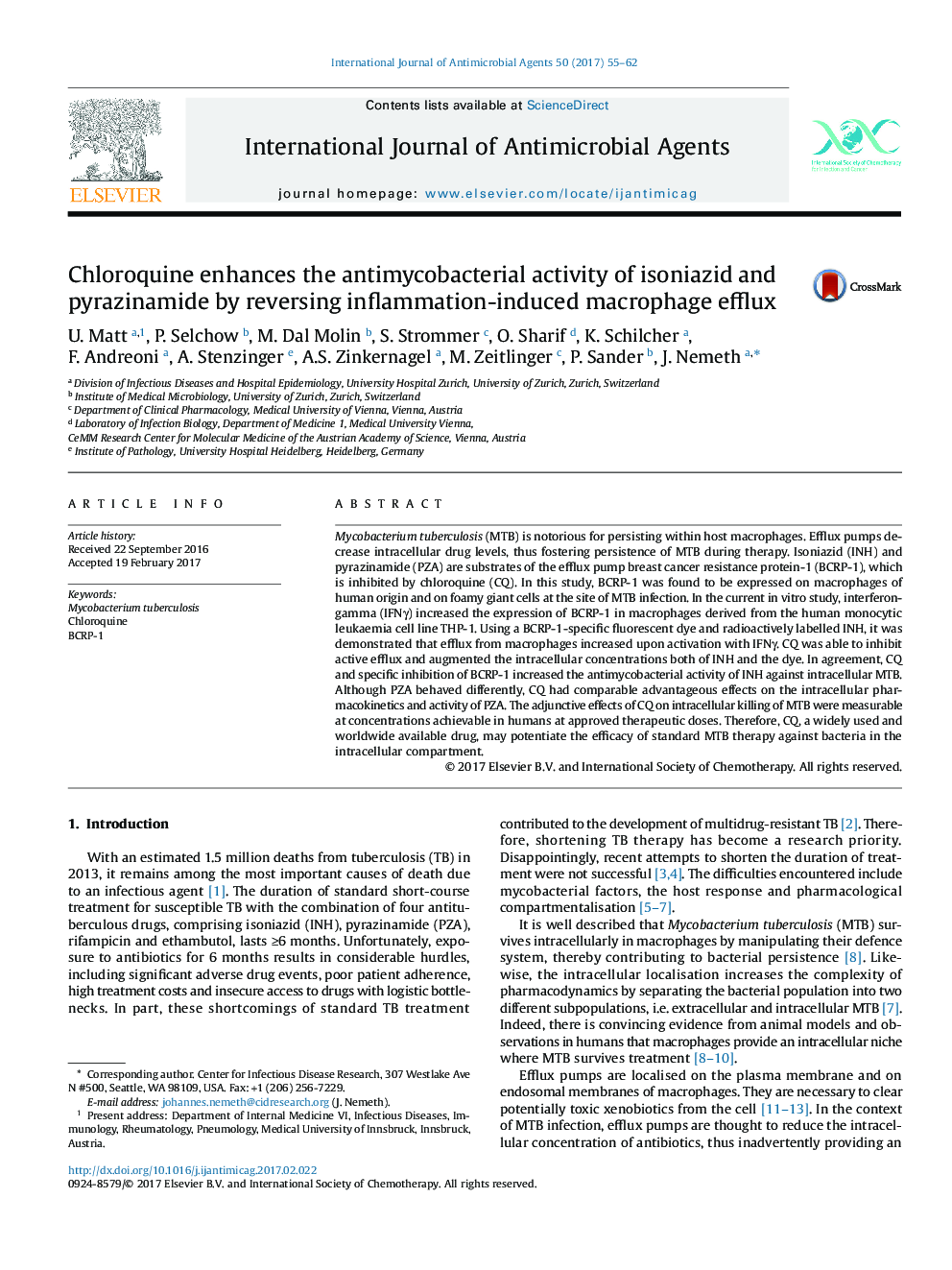| کد مقاله | کد نشریه | سال انتشار | مقاله انگلیسی | نسخه تمام متن |
|---|---|---|---|---|
| 5667001 | 1591739 | 2017 | 8 صفحه PDF | دانلود رایگان |
- Isoniazid (INH) and pyrazinamide (PZA) are substrates of active efflux from macrophages.
- BCRP-1 is expressed on human macrophages and at the site of active tuberculosis infection.
- Both the expression and the biological function of BCRP-1 are increased by IFNγ.
- Chloroquine inhibits BCRP-1 and thus active efflux both of INH and PZA from macrophages.
- Chloroquine acts at concentrations easily achievable in humans at approved therapeutic doses.
Mycobacterium tuberculosis (MTB) is notorious for persisting within host macrophages. Efflux pumps decrease intracellular drug levels, thus fostering persistence of MTB during therapy. Isoniazid (INH) and pyrazinamide (PZA) are substrates of the efflux pump breast cancer resistance protein-1 (BCRP-1), which is inhibited by chloroquine (CQ). In this study, BCRP-1 was found to be expressed on macrophages of human origin and on foamy giant cells at the site of MTB infection. In the current in vitro study, interferon-gamma (IFNγ) increased the expression of BCRP-1 in macrophages derived from the human monocytic leukaemia cell line THP-1. Using a BCRP-1-specific fluorescent dye and radioactively labelled INH, it was demonstrated that efflux from macrophages increased upon activation with IFNγ. CQ was able to inhibit active efflux and augmented the intracellular concentrations both of INH and the dye. In agreement, CQ and specific inhibition of BCRP-1 increased the antimycobacterial activity of INH against intracellular MTB. Although PZA behaved differently, CQ had comparable advantageous effects on the intracellular pharmacokinetics and activity of PZA. The adjunctive effects of CQ on intracellular killing of MTB were measurable at concentrations achievable in humans at approved therapeutic doses. Therefore, CQ, a widely used and worldwide available drug, may potentiate the efficacy of standard MTB therapy against bacteria in the intracellular compartment.
Journal: International Journal of Antimicrobial Agents - Volume 50, Issue 1, July 2017, Pages 55-62
